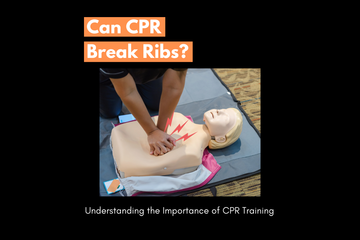
Tips for Creating a Safe Sleep Environment for Your Baby
Ensuring your baby has a safe sleep environment is one of the most critical steps you can take to reduce the risk of Sudden Infant Death Syndrome (SIDS) and other sleep-related hazards.
Creating a safe sleep space involves several key practices, and incorporating these tips can provide peace of mind and help protect your precious little one.
Use a Firm Mattress

A firm mattress is essential for your baby's crib. Soft mattresses can create suffocation hazards and increase the risk of SIDS.
Please ensure the mattress fits snugly in the crib without ANY gaps between the mattress and the crib walls.
Why Firm Mattresses Matter:
- Support: A firm mattress properly supports your baby's developing bones.
- Safety: Reduces the risk of suffocation and keeps the baby in a stable sleeping position.
- Durability: Firm mattresses tend to last longer and maintain their shape, ensuring continuous safety.
No Loose Bedding

Loose bedding, such as blankets, pillows, and stuffed animals, can pose a significant risk of suffocation and should be kept out of the crib.
Instead, you can opt for a fitted sheet that fits securely over the mattress. Remember never to have anything tied to the crib while your baby is sleeping.
Alternatives to Loose Bedding:
- Sleep Sacks: Wearable blankets that keep your baby warm without the risk of suffocation.
- Fitted Sheets: Ensure these are designed for your crib mattress and fit tightly.
Place Baby to Sleep on Their Back

Always place your baby on their back to sleep, for naps, and at night. This position significantly reduces the risk of SIDS.
Why Back Sleeping is Best:
- Breathing: Keeps the airway open and clear.
- Research-Backed: Multiple studies show significantly reduced SIDS cases with back sleeping.
Use a Sleep Sack

Sleep sacks or swaddling are an excellent alternative to loose blankets. They provide warmth and comfort while eliminating the risk of your baby pulling a blanket over their face.
Benefits of Sleep Sacks:
- Safety: Reduces the risk of suffocation and overheating.
- Comfort: Keeps your baby warm and secure.
- Convenience: Easy to use and available in various sizes and materials to suit different seasons.
Avoid Overheating

Overheating can increase the risk of SIDS. Dress your baby in light sleep clothing and keep the room comfortable.
Preventing Overheating:
- Room Temperature: Keep the nursery at a temperature comfortable for a lightly clothed adult.
- Clothing Layers: Dress your baby in only one more layer than an adult would wear to be comfortable.
- Monitoring: Check your baby's temperature by feeling the chest or the back of the neck. They should be warm but not hot or sweaty.
Additional Tips for a Safe Sleep Environment

Keep the Crib Bare
The crib should only contain the baby and the fitted sheet. Items like bumpers, pillows, quilts, and stuffed animals should be avoided.
Share a Room, Not a Bed
The American Academy of Pediatrics recommends that your baby sleeps in the same room as you for at least the first six months but not in the same bed.
Room sharing can reduce the risk of SIDS by up to 50%.
Pacifiers Can Help
Offering a pacifier at nap time and bedtime can reduce the risk of SIDS.
If breastfeeding, wait until breastfeeding is well established (about 3-4 weeks) before introducing a pacifier.
Product Recommendations
As you prepare to create the safest sleep environment for your baby, consider products designed to support these guidelines.
The Children's First Aid and CPR Kit by The Life Safety Pro includes essential items for minor sleep-related injuries or emergencies. It provides peace of mind, knowing you are prepared for any situation.
Conclusion
Creating a safe sleep environment is essential for your baby's well-being.
By following these tips, you can significantly reduce the risk of SIDS and other sleep-related hazards. Always remember, safety first!
Invest in the Children's First Aid and CPR Kit by The Life Safety Pro to ensure you have all the necessary tools and knowledge to keep your baby safe and secure. Visit our website today to purchase your kit and explore more safety tips!
Jeremy Manke is a PA Certified Paramedic and Firefighter with over 20 years of experience. Creator of the Children's First Aid and CPR Kit to help prepare families for life's Emergencies.






